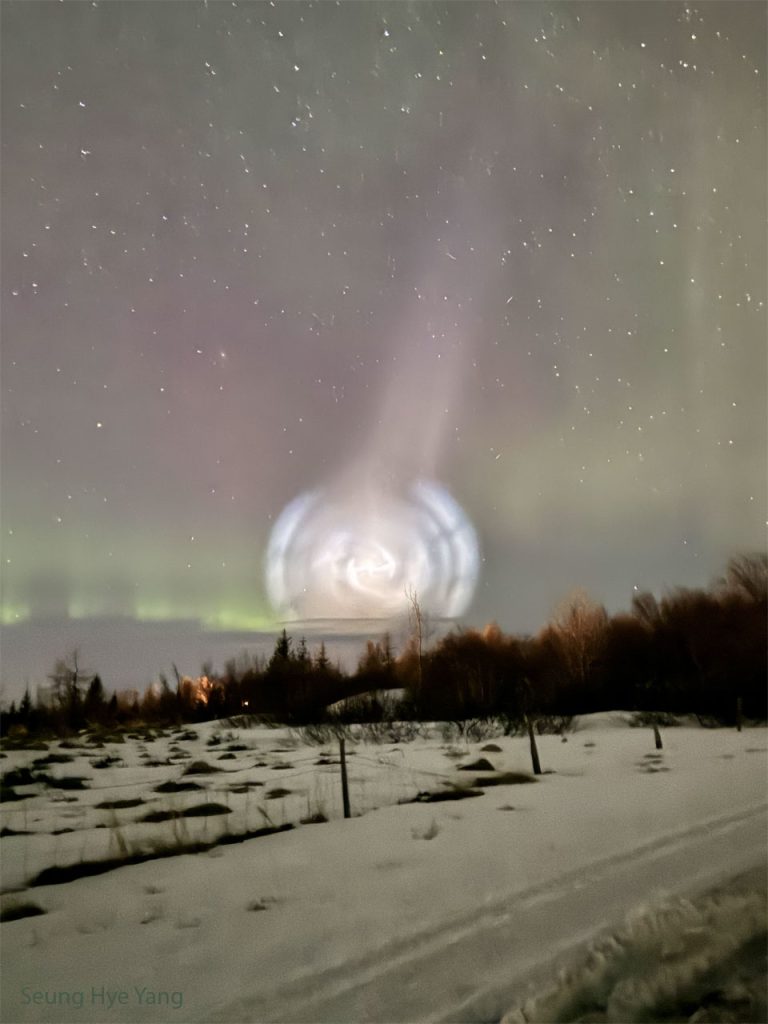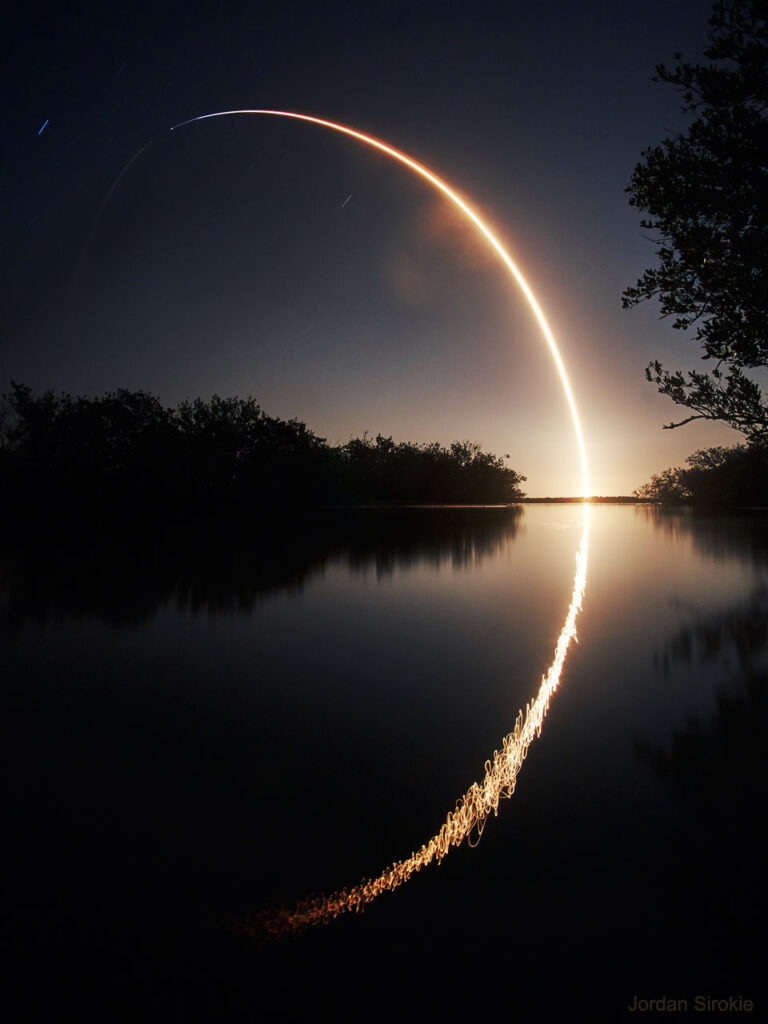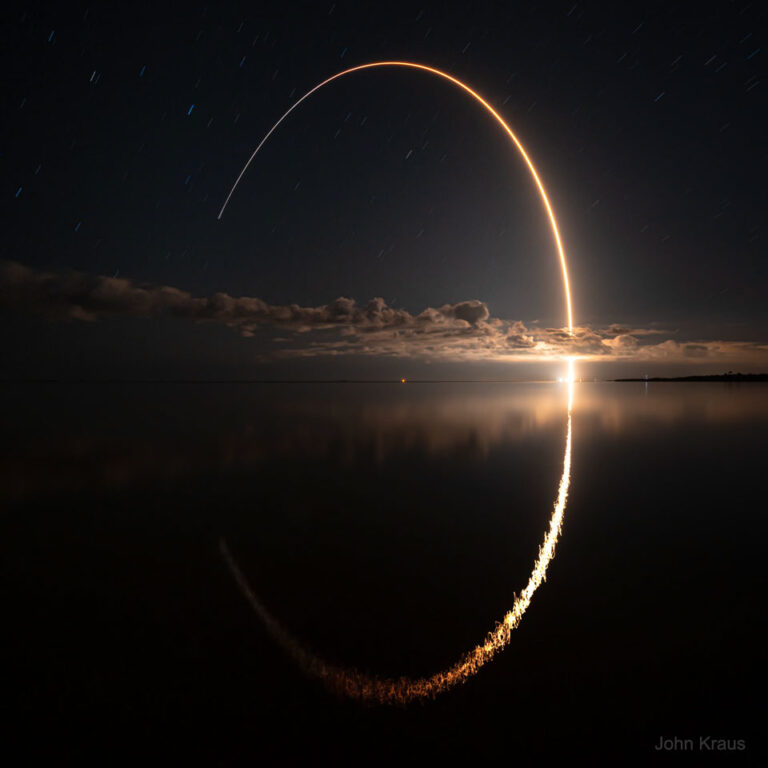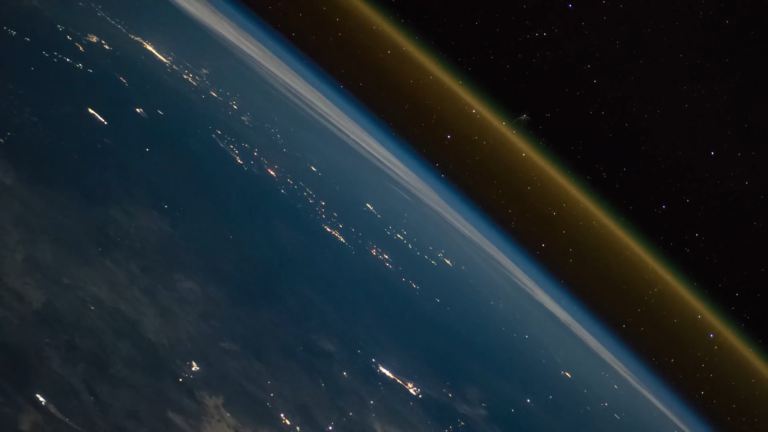蓝幽灵登月器航向月球
See Explanation. Clicking on the picture will download the highest resolution version available.
请参阅说明。单击图片将下载可用的最高分辨率版本。

See Explanation. Clicking on the picture will download the highest resolution version available.
请参阅说明。单击图片将下载可用的最高分辨率版本。

See Explanation. Clicking on the picture will download the highest resolution version available.
请参阅说明。单击图片将下载可用的最高分辨率版本。

See Explanation. Clicking on the picture will download the highest resolution version available.
请参阅说明。单击图片将下载可用的最高分辨率版本。

图中显示了一片雪地,后面两旁种满了树木。地平线上有一片不寻常的白色螺旋云。星星点缀着背景,还可以看到淡淡的绿色和红色极光。有关更多详细信息,请参阅说明。

2021年12月22日 Launch of the IXPE Observatory Image Credit & Copyright: Jordan Sirokie Explanation: Birds don’t fly this high. Airplanes don’t go this fast. The Statue of Liberty weighs less. No species other than human can even comprehend what is going on, nor could any human just a millennium ago. The launch of a rocket bound for space is an event that inspires awe and challenges description. Pictured here, a SpaceX Falcon 9 rocket lifted off from Kennedy Space Center, Florida earlier this month carrying the Imaging X-ray Polarimetry Explorer (IXPE). IXPE is scheduled to observe high-energy objects such as neutron stars, black holes, and the centers of distant galaxies to better determine the physics and geometries that create and control them. From a standing start,…

2021年10月20日 Lucy Launches to Eight Asteroids Image Credit & Copyright: John Kraus Explanation: Why would this mission go out as far as Jupiter — but then not visit Jupiter? Lucy’s plan is to follow different leads about the origin of our Solar System than can be found at Jupiter — where Juno now orbits. Jupiter is such a massive planet that its gravity captures numerous asteroids that orbit the Sun ahead of it — and behind. These trojan asteroids formed all over our Solar System and some may have been trapped there for billions of years. Flying by these trojan asteroids enables studying them as fossils that likely hold unique clues about our early Solar System. Lucy, named after a famous fossil skeleton which was…

2021年05月07日 Mercury-Redstone 3 Launch Image Credit: NASA Explanation: Sixty years ago, near the dawn of the space age, NASA controllers “lit the candle” and sent Mercury astronaut Alan Shepard arcing into space atop a Redstone rocket. His cramped space capsule was dubbed Freedom 7. Broadcast live to a global television audience, the historic Mercury-Redstone 3 (MR-3) spacecraft was launched from Cape Canaveral Florida at 9:34 a.m. Eastern Time on May 5, 1961. The flight of Freedom 7, the first space flight by an American, followed less than a month after the first human venture into space by Soviet Cosmonaut Yuri Gagarin. The 15 minute sub-orbital flight achieved an altitude of 116 miles and a maximum speed of 5,134 miles per hour. As Shepard looked back…

2021年04月01日 Rocket Launch as Seen from the Space Station Video Credit: ISAA, NASA, Expedition 57 Crew (ISS); Processing: Riccardo Rossi (ISAA, AstronautiCAST); Music: Inspiring Adventure Cinematic Background by Maryna Explanation: Have you ever seen a rocket launch — from space? A close inspection of the featured time-lapse video will reveal a rocket rising to Earth orbit as seen from the International Space Station (ISS). The Russian Soyuz-FG rocket was launched in November 2018 from the Baikonur Cosmodrome in Kazakhstan, carrying a Progress MS-10 (also 71P) module to bring needed supplies to the ISS. Highlights in the 90-second video (condensing about 15-minutes) include city lights and clouds visible on the Earth on the lower left, blue and gold bands of atmospheric airglow running diagonally across the…

2020年11月19日 Crew-1 Mission Launch Streak Image Credit & Copyright: Jen Scott Explanation: Leaving planet Earth for a moment, a SpaceX Falcon 9 rocket arced into the early evening sky last Sunday at 7:27 pm EST from Kennedy Space Center’s Launch Complex 39A. This 3 minute 20 second exposure traces the launch streak as seen over watery reflections from Port Canaveral, about 15 miles south of the launch. The rocket carried four astronauts en route to the International Space Station on the first flight of a NASA-certified commercial human spacecraft system. Dubbed Resilience, the astronauts’ Crew Dragon spacecraft successfully docked with the orbital outpost one day later, on Monday, November 16. At the conclusion of their six-month stay on the ISS, the Crew-1 astronauts will use…